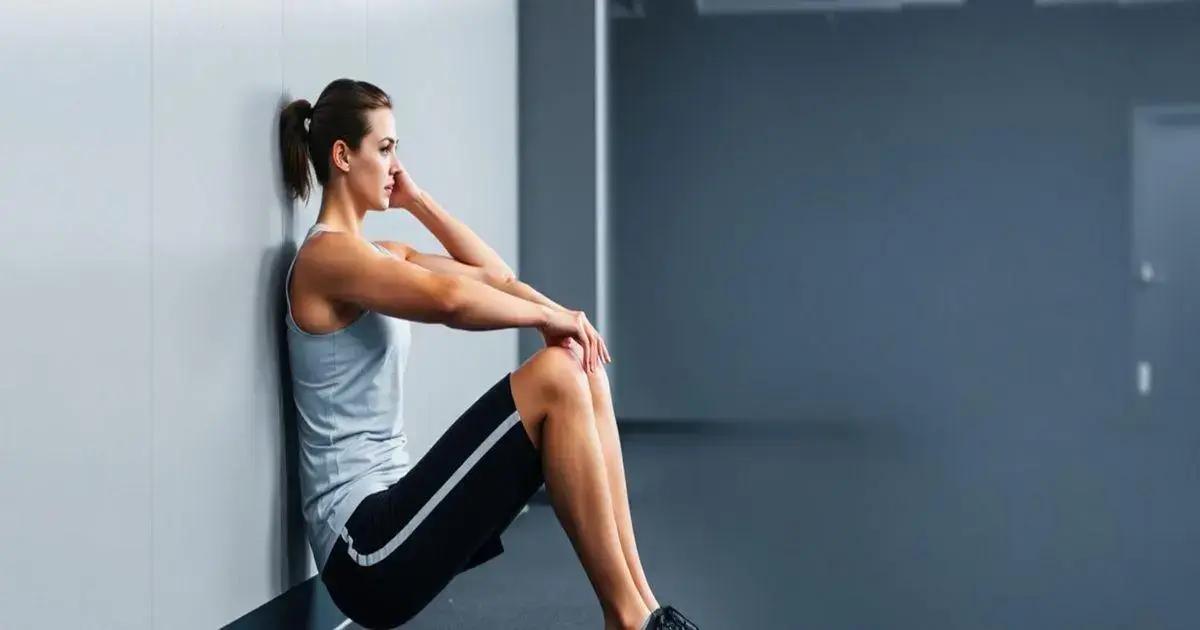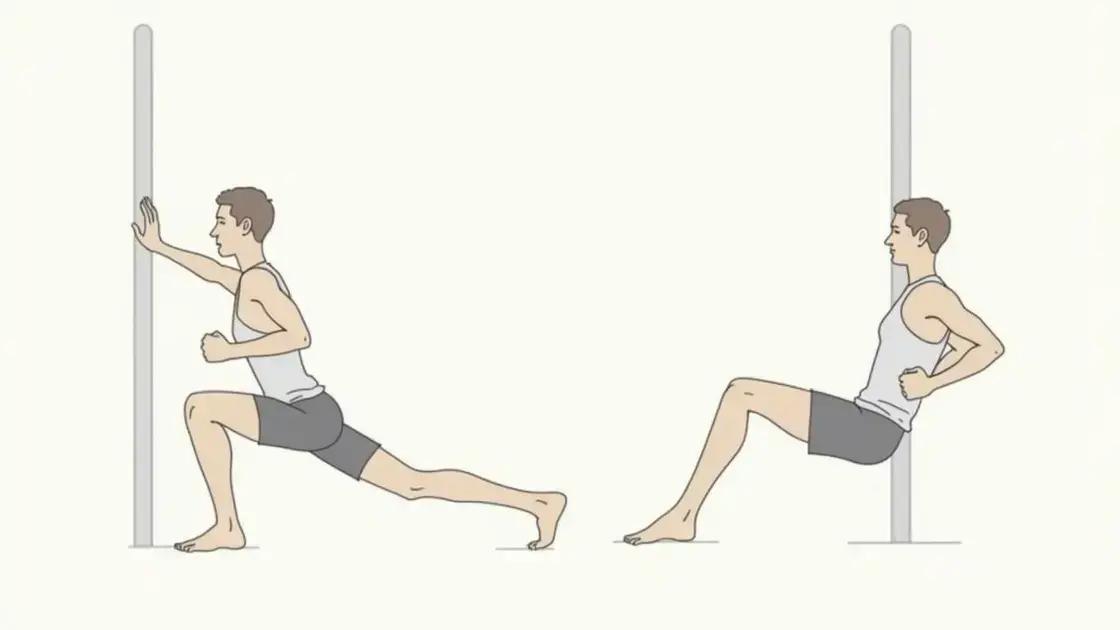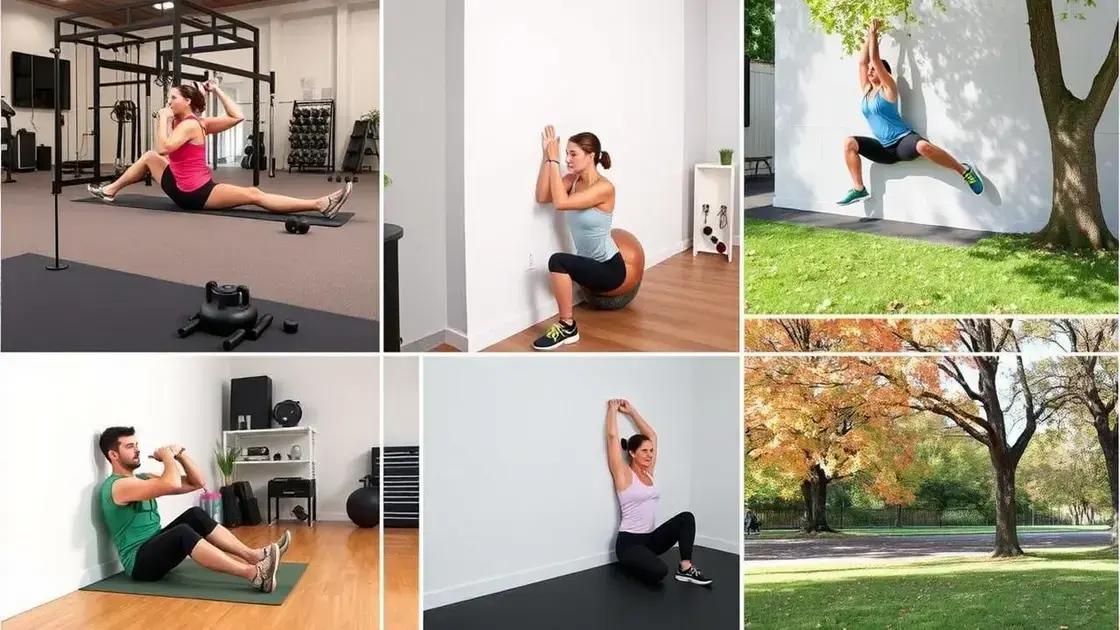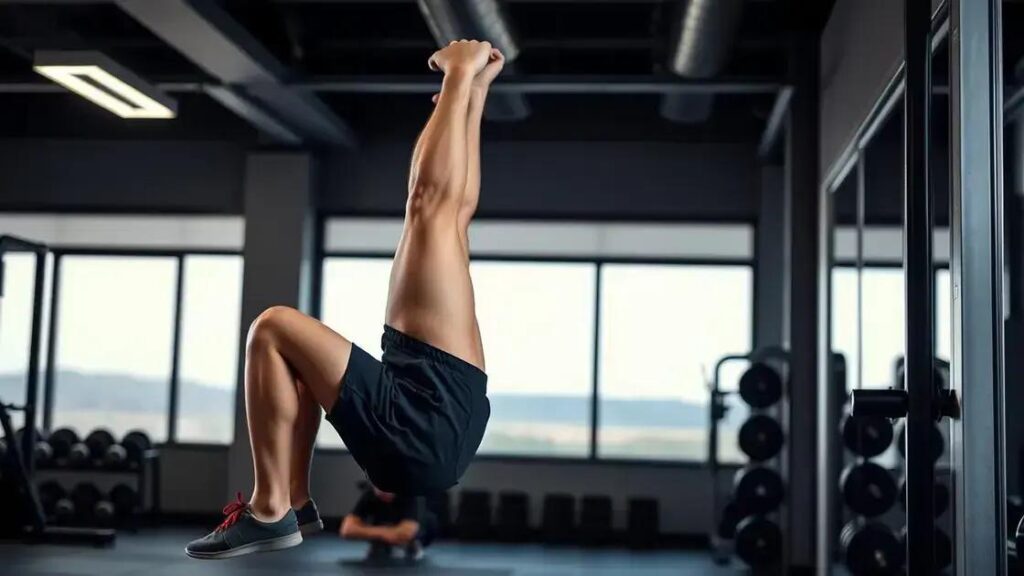Wall sits are an effective exercise to enhance quad strength and endurance, requiring a proper technique where you slide down a wall until your thighs are parallel to the ground. They improve muscle endurance, strength, stability, and are easily integrated into various workouts.
Are you looking to enhance your leg strength? Wall sits are an effective exercise that targets your quadriceps, helping improve strength and endurance. In this article, we’ll discuss the numerous benefits of wall sits, how to maintain proper form during the exercise, and ways to integrate them into your fitness routine for maximum results. Whether you are a beginner or a seasoned athlete, understanding the fundamentals of wall sits is essential for boosting your leg strength.
Understanding Wall Sits

Wall sits are a simple yet effective exercise that focuses on building endurance and strength in your quadriceps. This is a static exercise where you ‘sit’ against a wall while keeping your knees bent at a right angle. It mimics the position of sitting in a chair, making it accessible for people of all fitness levels.
Muscles Targeted
The primary muscles worked during wall sits are the quadriceps. However, this exercise also engages your hamstrings, glutes, calves, and even your core for stabilization. By strengthening these muscles, you can improve your overall performance in various sports and activities.
History and Popularity
Wall sits are not only a part of traditional fitness routines but are also often used in athletic training and physical therapy. They have gained popularity due to their effectiveness in training for sports that require strong legs, such as football and basketball. The ease of modification makes wall sits a go-to exercise for both trainers and therapists.
Variations of Wall Sits
While the basic wall sit is effective, various variations can increase the challenge. For instance, you can try lifting one leg at a time or incorporating weights. You might also add pulse movements or hold for longer durations to advance your practice.
Safety Tips
When performing wall sits, it’s important to maintain proper form to prevent injury. Make sure your back stays flat against the wall and that your knees do not extend beyond your toes. Start with shorter durations, especially if you’re new to exercising, and gradually increase your time as you build strength and endurance.
Benefits of Wall Sits for Quads

Wall sits offer several benefits, particularly for developing your quadriceps. This exercise specifically targets the muscles in the front of your thighs, making them stronger and more defined.
Increased Muscle Endurance
One of the main benefits of wall sits is improved muscle endurance. By holding this position for extended periods, you teach your muscles to sustain effort over time. This is crucial for athletes and active individuals who require long-lasting leg strength.
Enhanced Muscle Strength
In addition to increasing endurance, wall sits also help to build overall muscle strength. Stronger quadriceps can improve your performance in various sports and physical activities, such as running, jumping, and cycling.
Low Impact Exercise
Wall sits are a low-impact exercise, meaning they place less stress on your joints compared to high-impact activities. This makes them an excellent choice for individuals recovering from injuries or those with joint problems.
Improved Stability and Balance
Performing wall sits can enhance your stability and balance. Engaging your core while maintaining the position supports better overall body control, which is beneficial for athletic performance and daily activities.
Convenient and Accessible
Another advantage of wall sits is their convenience. You can do them anywhere, whether at the gym, at home, or even in your office. Requires no equipment, making it a great exercise for anyone to add to their routine.
Proper Form and Technique

To get the most out of wall sits, it is essential to use proper form and technique. This ensures that you target the right muscles effectively while minimizing the risk of injury.
Starting Position
Begin by standing with your back against a flat wall. Your feet should be shoulder-width apart, about 2 feet from the wall. This distance can be adjusted based on your comfort and flexibility.
Engaging Your Core
Before you slide down, engage your core muscles. This provides stability and helps maintain a neutral spine while performing the exercise. A strong core is vital for keeping your posture correct.
Sliding Down
Slowly slide your back down the wall until your thighs are parallel to the floor. Your knees should be directly above your ankles, forming a 90-degree angle. Avoid letting your knees extend past your toes, as this can lead to strain.
Staying Aligned
Ensure your back stays flat against the wall throughout the exercise. This will keep your spine aligned and reduce the risk of back pain or injury. Keep your chest up and your shoulders back.
Holding the Position
Once in position, hold the wall sit for as long as you can maintain proper form. Start with 20-30 seconds and gradually increase the time as you build strength. Focus on breathing steadily and keeping your muscles engaged.
Integrating Wall Sits into Your Workout

Integrating wall sits into your workout routine can enhance your overall fitness and specifically target your quads. Here are some effective ways to include them:
As Part of a Lower Body Workout
Wall sits can be a key component of a lower body workout. Combine them with other exercises like squats, lunges, and calf raises for a comprehensive leg routine. Perform wall sits after dynamic movements to continue building endurance when your muscles are already fatigued.
In Supersets or Circuits
Incorporate wall sits into a superset or circuit training session. Pair them with strength exercises such as push-ups or dumbbell rows. This keeps your heart rate up and adds a challenge to your workout. For example, perform a set of push-ups, then immediately transition into a wall sit for added intensity.
With Rest Intervals
Use wall sits during rest intervals of other exercises. If you’re doing high-intensity workouts, take a break by holding a wall sit for 30 seconds. This makes your workout more effective while also training your quads.
For Warm-Up and Cool Down
Consider doing wall sits as part of your warm-up or cool-down routine. They activate the quadriceps and help improve blood flow to your legs. Additionally, holding wall sits during cool down can enhance flexibility and help prevent soreness.
Setting Goals
Set specific goals for your wall sits, like increasing hold time or trying new variations. Tracking your progress can help you stay motivated and challenge your legs in different ways as you get stronger.
Maximize Your Quad Strength with Wall Sits
Integrating wall sits into your fitness routine is an effective way to enhance quad strength and endurance. This simple yet powerful exercise targets key muscle groups while being accessible for everyone.
Understanding the correct form and technique is essential for maximizing benefits and preventing injuries. As you embrace the numerous benefits of wall sits, you can experience increased muscle endurance, strength, and improved stability.
By incorporating wall sits into various aspects of your workouts—whether through circuits, supersets, or as part of your warm-up—you can continuously challenge your body and achieve your fitness goals. Remember to set manageable goals and track your progress to stay motivated on your fitness journey.
With dedication and consistency, wall sits can become a cornerstone of your workout regimen, helping you build the strong, enduring legs you desire.
FAQ – Frequently Asked Questions About Wall Sits
What are wall sits and how do they work?
Wall sits are an isometric exercise that targets the quadriceps by holding a seated position against a wall. They help strengthen and build endurance in the front of your thighs.
How can I include wall sits in my workout?
You can include wall sits in various ways, such as part of your lower body workout, in supersets or circuit training, using them during rest intervals, or as part of warm-up and cool-down routines.
What are the main benefits of wall sits?
Wall sits improve muscle endurance, increase muscle strength, provide a low-impact workout option, enhance stability and balance, and are convenient to perform anywhere.
How long should I hold a wall sit?
Beginners can start with 20-30 seconds and gradually increase the duration as they build strength. Aim to hold for up to a minute or longer as you progress.
What is the proper form for a wall sit?
To perform a wall sit correctly, stand with your back against the wall, slide down until your thighs are parallel to the floor, keep your knees above your ankles, and maintain a flat back against the wall.
Are wall sits safe for everyone?
Yes, wall sits are generally safe for most individuals. However, those with existing knee or back issues should consult with a healthcare provider before starting any new exercise.












